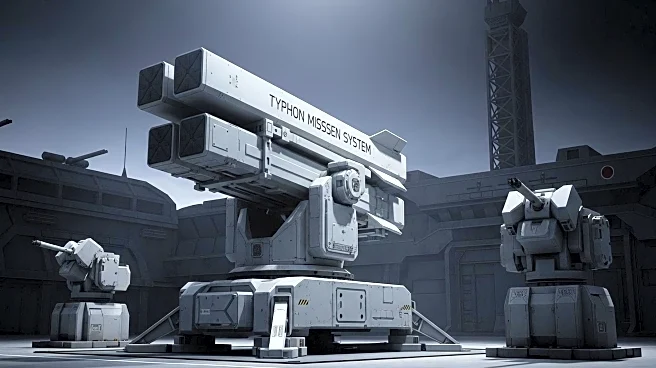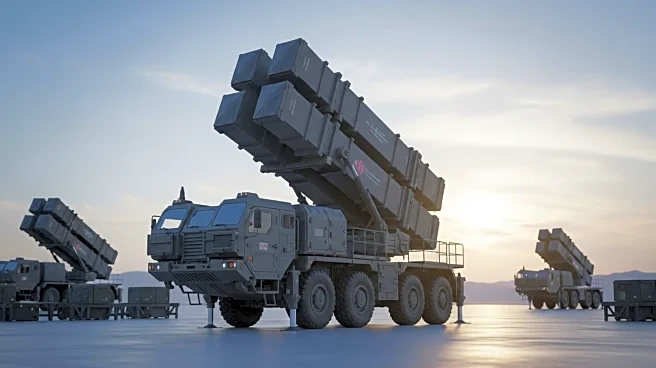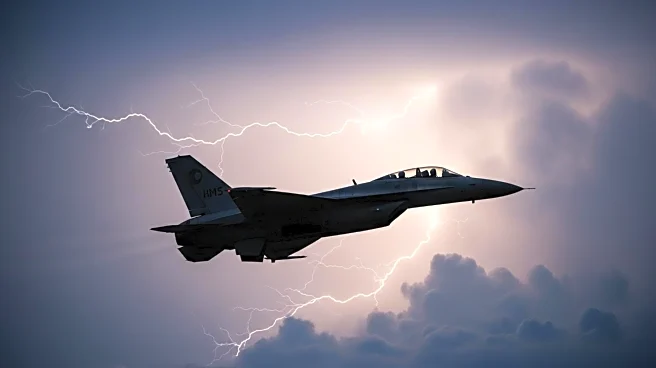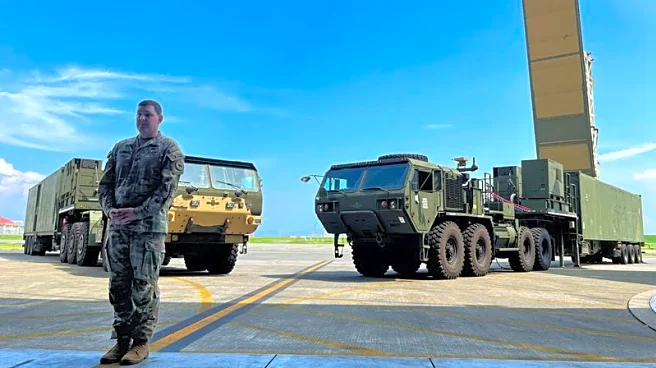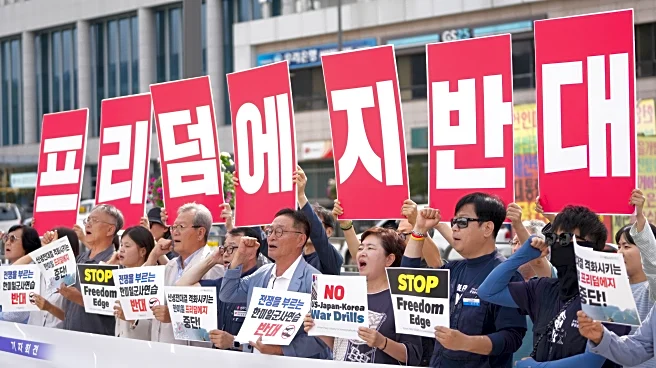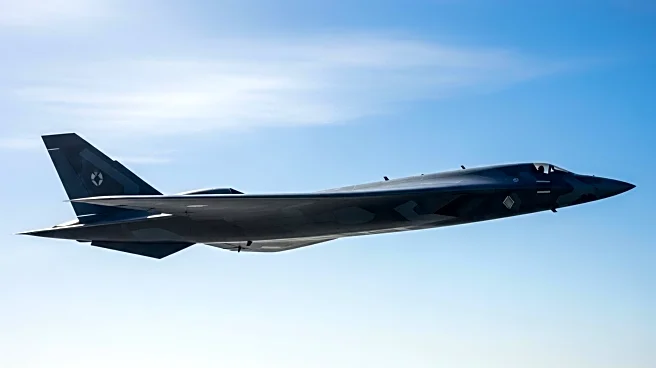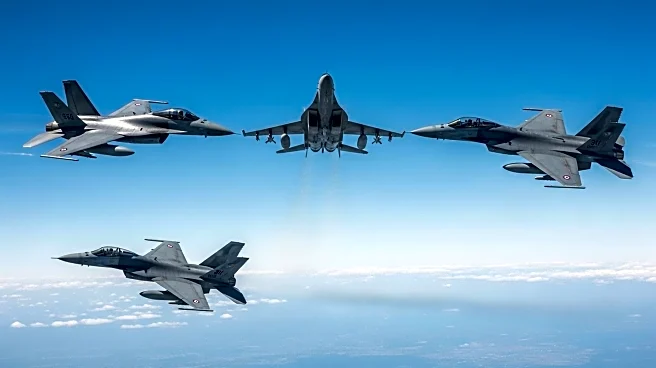What's Happening?
The U.S. Army has introduced its mid-range missile system, Typhon, at a base in Japan as part of the annual bilateral exercise Resolute Dragon. This exercise involves over 19,000 U.S. and Japanese troops and focuses on maritime defense and littoral protection. The Typhon system, capable of launching Standard Missile-6 and Tomahawk cruise missiles, was delivered to the U.S. Marine Corps Base in Iwakuni, Japan. This deployment is a response to China's increasing assertiveness in the region and follows its previous deployment in the Philippines, which drew criticism from China and Russia. The exercise is scheduled to conclude on September 25, and the missile system will not be fired during this period.
Why It's Important?
The deployment of the Typhon missile system in Japan signifies a strategic move by the U.S. and Japan to bolster their defense capabilities against potential threats from China, North Korea, and Russia. This action underscores the growing military collaboration between the U.S. and Japan, aimed at countering regional security challenges. The presence of such advanced weaponry in Japan could potentially escalate tensions with neighboring countries, particularly China, which has been expanding its military presence in the East China Sea. The move also highlights Japan's efforts to enhance its military capabilities, particularly its strike-back potential, in response to regional threats.
What's Next?
The conclusion of the Resolute Dragon exercise on September 25 will likely be followed by assessments of the effectiveness of the Typhon system's deployment. The U.S. and Japan may continue to strengthen their military cooperation, potentially leading to further joint exercises or deployments. Reactions from China and Russia could include diplomatic protests or increased military activities in the region. The situation will require careful monitoring to prevent any escalation of tensions.

